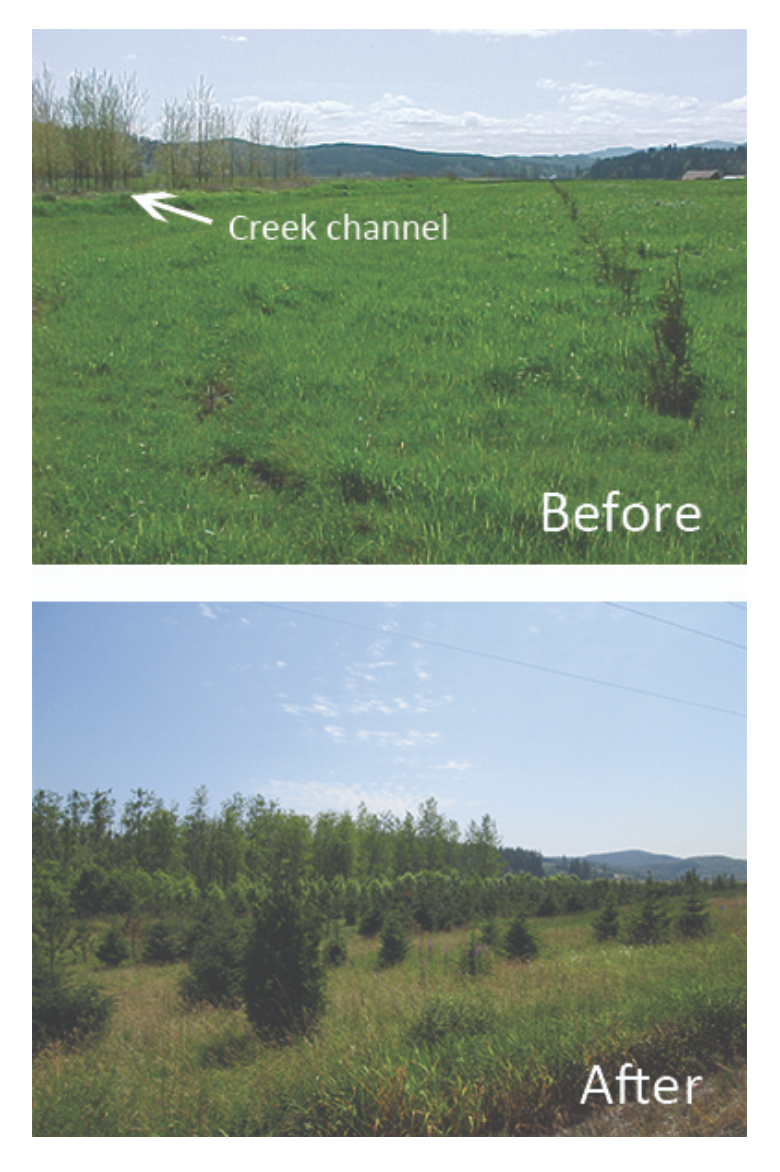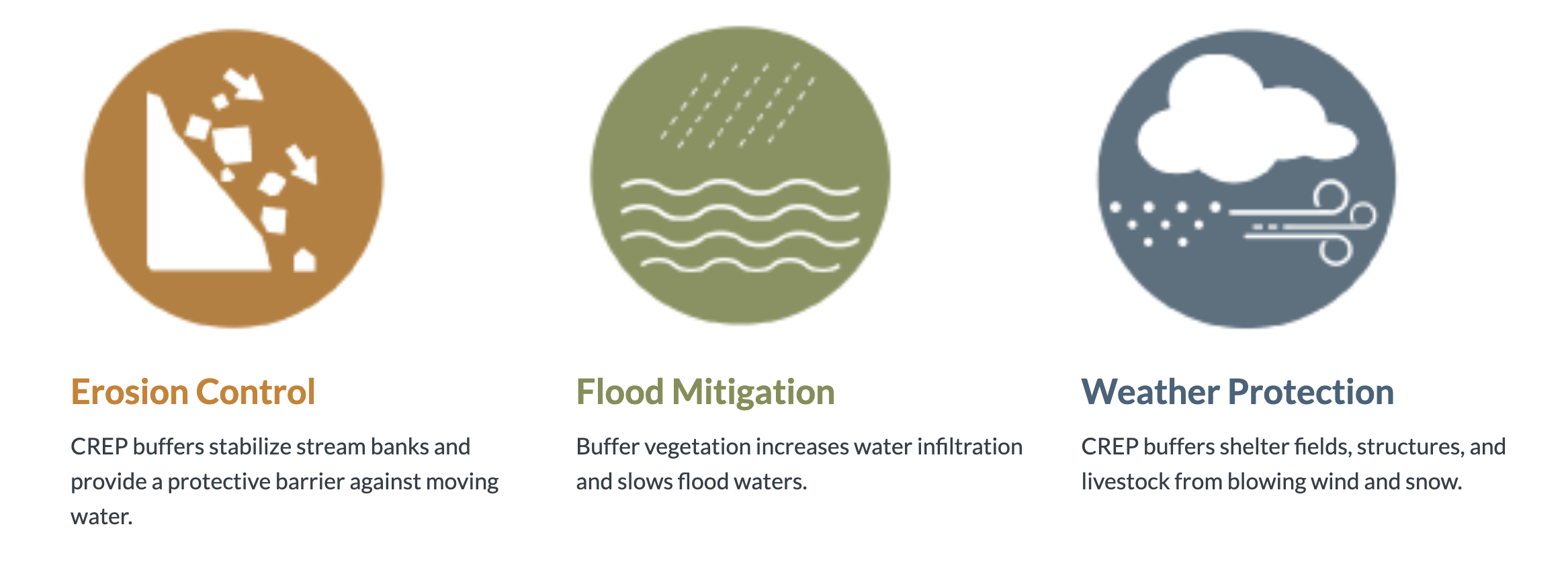About this Conservation Program

What is CREP?
CREP engages farmland owners as partners in restoring salmon habitat.
Farmers are compensated for voluntarily planting native vegetation along salmon-bearing streams, rather than crops. Vegetation forms a buffer between agricultural land and salmon streams, keeping water clean and cool for salmon. Riparian buffers are preserved under 10-15 year renewable contracts.
Project costs are paid for by the program. The program also provides oversight and maintenance for five years after planting to ensure that trees and vegetation grow healthy and strong.
Landowners are paid rent for the acreage they restore, and they receive a monetary bonus for enrolling in the program. This makes CREP a win-win for Washington farms and fish.
CREP is a voluntary program administered at the federal-level by the Farm Service Agency (FSA), at the state-level by the State Conservation Commission (SCC), and at the local level by conservation districts.
If you are a CREP technician, you can find more resources here.
Accomplishments
Since its inception in 1999, CREP has voluntarily engaged landowners with:
- Enhancing salmon habitat along over 925 miles of stream — that’s the distance from Seattle to the Grand Canyon!
- Planting nearly six million trees, and each one benefits soil, air, and water quality.
- Constructing over 280 miles of fence to keep livestock away from salmon streams — that's the distance from Bellingham to Pullman!
- Enrolling over 207,000 acres in the program — that's almost enough to cover all of Mount Rainier National Park.
Read this Success Story Snapshot about CREP in the Tucannon River to see an example of accomplishments on the ground.
Results
- CREP plants are growing and surviving well with growth ranging from 10.6 to 29.3″ per year, and site survival averaging 75-90%.
- Cooling summer water temperatures for salmon is an important goal for CREP. CREP sites that are 5-10 years old are already averaging 72% canopy cover along small streams. This is a remarkable result!
- In areas with high levels of CREP participation, water temperature have cooled by as much as 10 degrees Fahrenheit.
What other ways do CREP buffers benefit farms?
CREP buffers provide multiple benefits to farms, including:
- Erosion Control: CREP buffers stabilize stream banks and provide a protective barrier against moving water.
- Flood Mitigation: Buffer vegetation increases water infiltration and slows flood waters.
- Weather Protection: CREP buffers shelter fields, structures, and livestock from blowing wind and snow.

Staff & Contact
Files & Publications
CREP Files
CREP Monitoring Reports Each year, a randomly-selected group of CREP sites is monitored by the Conservation Commission for effectiveness. Below are the links to each of the annual reports that include this monitoring.
Funding
CREP Eligibility & How to Apply
Access the following resources to learn more about CREP eligibility and how to apply.
- Contact your local conservation district
- Review the CREP fact sheet
- Map of eligible stream segments (updated February 2018)
- Contact Brian Cochrane, Washington State Conservation Commission, CREP coordinator

.svg)